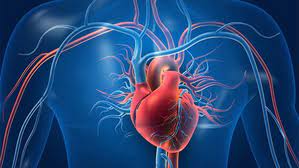In a significant advancement in understanding the physiological effects of heat stress on the elderly, researchers from the University of California, Irvine (UCI) have identified the molecular underpinnings of heat-induced damage to the gut, liver, and brain. These findings hold promise for the development of targeted prognostic and therapeutic interventions to safeguard the health of aging populations.
Published in the journal Scientific Reports, a Nature Portfolio publication, the study conducted by UCI scientists delves into the intricate communication network linking the gut, liver, and brain, collectively referred to as the gut-liver-brain axis. This axis plays a pivotal role in various bodily functions, from digestion to cognitive processes, making it a critical focus for understanding and mitigating the impact of heat stress on human health.
Lead author Saurabh Chatterjee, a professor of environmental and occupational health at the UC Irvine Program in Public Health, highlighted the significance of their research, stating, “Inflammation in the brain and spine contributes to cognitive decline, compromises the ability to form new neurons, and exacerbates age-related diseases.” By investigating the effects of heat stress on this complex biological conversation, the researchers aim to better protect the increasingly vulnerable elderly population.
Employing advanced techniques such as RNA analysis and bioinformatics, Chatterjee and his team examined elderly mice subjected to heat stress. Their analysis revealed a notable increase in the production of ORM2, a protein originating from the liver, in the heat-stressed mice compared to the control group. This elevation in ORM2 levels suggests organ dysfunction induced by heat stress, with implications for gut inflammation and compromised blood-brain barrier integrity.
The study underscores the potential of ORM2 as a targeted biomarker for interventions aimed at preventing liver disease resulting from heat exposure. By unraveling the molecular mechanisms driving adverse heat events, these findings provide critical insights into the pathophysiology of heat-related illnesses and lay the groundwork for future research endeavors.
Chatterjee emphasized the broader implications of their work, stating, “Our findings have the potential to be used for the development of prognostic and therapeutic markers for precise interventions.” With climate change exacerbating the frequency and intensity of heat waves, the researchers stress the urgency of addressing the health risks posed to the aging population by heat stress.
The study was made possible through funding from the National Institute of Environmental Health Sciences and a Veterans Affairs Merit award. Additional contributors from UCI Public Health and the Environmental Health and Disease Laboratory played integral roles in conducting the research, further highlighting the collaborative effort driving scientific discovery at UCI.












